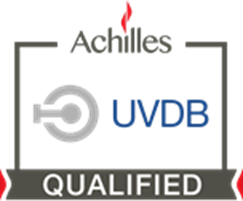Every pipeline project is different – shaped by geography, infrastructure, regulation, and practical constraints. That’s why the industry relies on a range of solutions, each with its strengths. The key is matching the right technique to the right situation – and when conventional access is restricted or excavation is impractical, DieDraw® offers a proven, engineered solution.
DieDraw® is a tight-fit PE100 lining technique that forms a new pipe inside the existing host. It’s Reg31 compliant, delivers 100-year design life, maintains flow capacity, and minimises whole-life cost. Crucially, the technique is designed to be flexible – making it a powerful option in locations where traditional methods are challenged by the surrounding environment.
DieDraw® has been successfully deployed in environments where conventional techniques face significant limitations – including pipelines under railway bridges and beneath farmland where open cut simply isn’t viable.
The strength of the DieDraw® approach is in its ability to deliver engineered solutions in complex conditions – creating new pipelines within existing infrastructure, without the need for excavation or disruption. We’ve received numerous enquiries for river crossings and bridge-based installations – often because conventional methods simply don’t provide a workable option.
It’s not about replacing other methods – it’s about ensuring every viable option is considered. Because in many cases, overlooking DieDraw® means missing a solution that could save time, cost, and complexity.
Installation is fast, with minimal surface disruption and no need for long-term closures or invasive works. And because DieDraw® is a replacement technique, it satisfies both rehabilitation and renewal criteria – with the credibility that comes from more than a million metres installed across the UK.
If you’re planning for AMP8 or looking at long-term resilience for critical pipelines, don’t rule out an option that was engineered specifically for this kind of challenge. Consider DieDraw® for every project.




